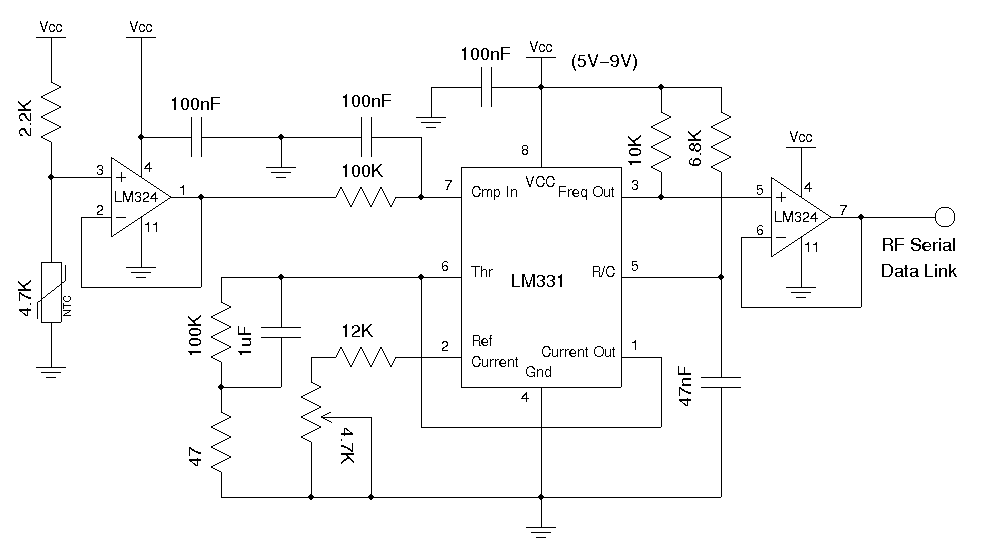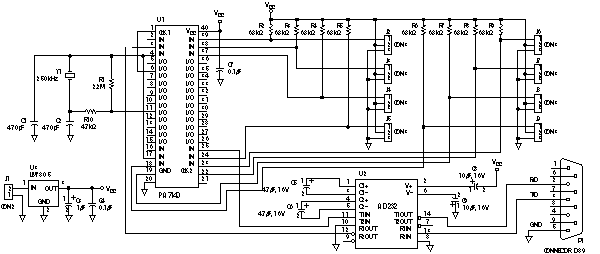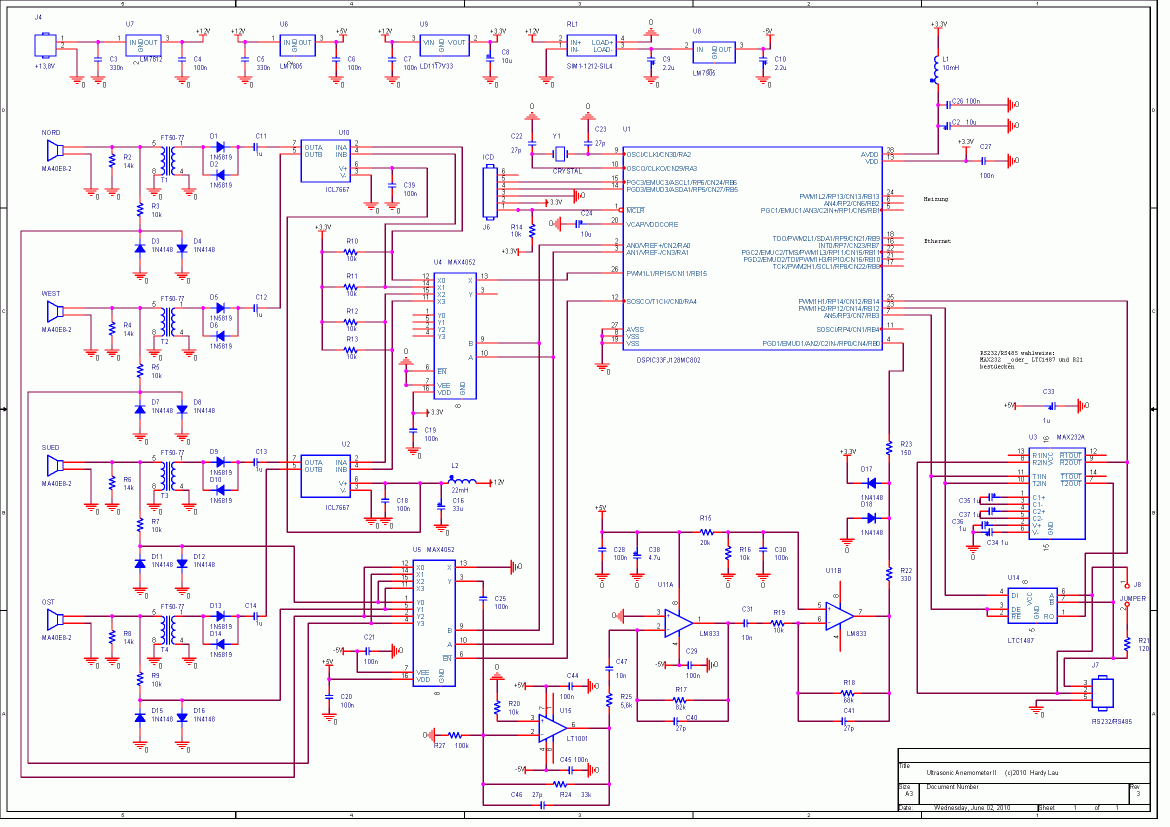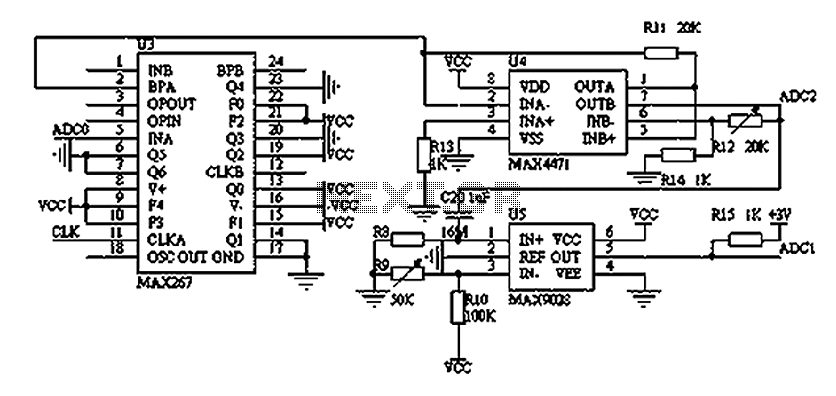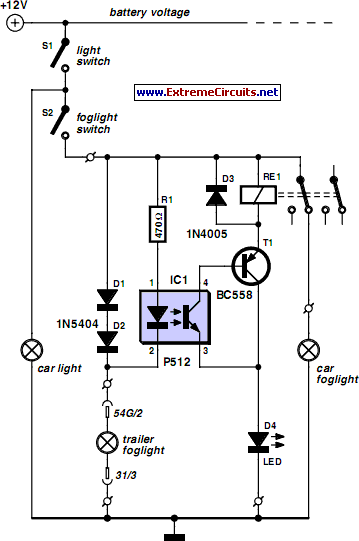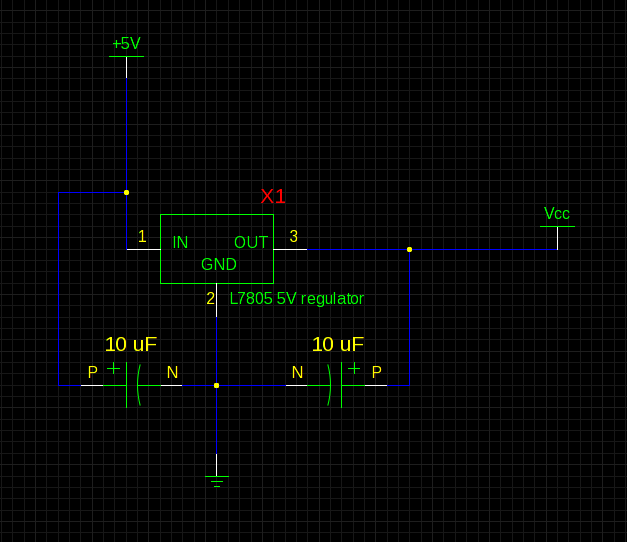
Sensitive Overload Sensor
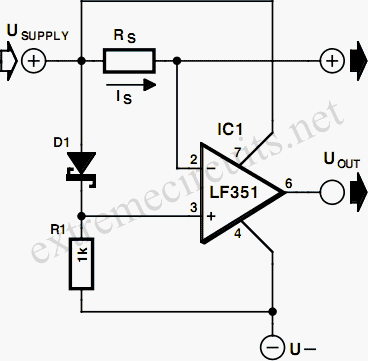
The most effective method for measuring current in a circuit is to insert a sense resistor into the current path. A higher resistance results in a more accurate measurement; however, it can also impact the circuit's operation. Utilizing an active sensor allows for a smaller sense resistance. The circuit diagram illustrates how to construct a sensitive overload indicator using a simple operational amplifier (such as an LF351) and a sense resistor in the current path. A voltage difference is created between the positive and negative inputs of the op-amp with the assistance of a diode. Typically, the voltage drop across D1 (a Schottky diode) ranges from 0.2 to 0.3 V, a value that can be slightly adjusted by R1, which influences the current flowing through the diode. A larger R1 value results in a smaller voltage drop across the diode. The inverting input of the op-amp is connected to the positive supply voltage after the sense resistor Rs. As a result, the output voltage of the op-amp will equal the negative supply voltage, for instance, 5 V. As the current through the sense resistor Rs increases, the voltage at the inverting input of the op-amp decreases. Once the voltage drop across Rs (Is * Rs) exceeds the voltage drop across D1, the op-amp output will switch to the positive supply voltage level. An indicator lamp or relay can be connected to the op-amp output. The maximum supply voltage for the op-amp is ±15 V, making the circuit suitable for monitoring symmetric power supplies with voltages ranging from 5 V to 15 V.
The circuit design for the sensitive overload indicator employs an operational amplifier (op-amp) configured in a comparator mode, which is adept at detecting voltage thresholds. The sense resistor (Rs) is strategically placed in series with the load to monitor the current flowing through it. The voltage across Rs is directly proportional to the current, following Ohm's law (V = I * R).
In this configuration, the op-amp's inverting input is connected to the junction of Rs and the diode (D1), while the non-inverting input is tied to a reference voltage derived from the positive supply. The Schottky diode is chosen for its low forward voltage drop, ensuring that the circuit can operate effectively even with minimal voltage differences.
R1, which is connected in series with the diode, serves to limit the current flowing through D1, thereby controlling the voltage drop across it. The design allows for fine-tuning of the sensitivity of the current detection. When the current exceeds a predetermined threshold, the voltage drop across Rs will surpass that across D1, causing the op-amp to switch its output state.
The output of the op-amp can drive an indicator lamp or relay, providing a visual or mechanical alert when an overload condition is detected. The circuit's ability to handle supply voltages of ±15 V makes it versatile for various applications, including industrial machinery, power supply monitoring, and safety systems. This design effectively balances the need for accurate current measurement with minimal impact on the circuit's overall performance.The best way to measure the current in a circuit is to place a sense resistor in the current path. The higher the resistance, the more exact the measurement will be. However, the drawback of a high resistance is that it affects the operation of the circuit in which the measurement is being made. If an active sort of sensor is used, the sense resis tance can be kept small. The circuit diagram shows how a sensitive overload indicator can be built using a simple opamp (such as an LF351) and a sense resistor in the current path. A voltage difference is generated between the plus and minus inputs of the opamp with the help of a diode.
Usually, the voltage drop across D1 (a Schottky diode) will be 0. 2 to 0. 3 V. This value can be influenced somewhat by R1, which affects the amount of current that flows through the diode. The larger the value of R1, the smaller the voltage drop across the diode. The inverting input of the opamp is connected to the positive supply voltage following the sense resistor Rs.
Consequently, the voltage level at the output of the opamp will be equal to the negative supply voltage, for example 5 V. As the current that‚ows through the sense resistor Rs increases, the voltage on the inverting input of the opamp decreases.
As soon as the voltage drop across Rs (= Is G— Rs) becomes slightly greater than the voltage drop across D1, the output of the opamp will switch to the positive supply voltage level. An indicator lamp or relay can be connected to the opamp output. The maximum supply voltage for the opamp is ±15 V, so the circuit can readily be used to monitor symmetric power supplies with voltages between 5 and 15V.
🔗 External reference
The circuit design for the sensitive overload indicator employs an operational amplifier (op-amp) configured in a comparator mode, which is adept at detecting voltage thresholds. The sense resistor (Rs) is strategically placed in series with the load to monitor the current flowing through it. The voltage across Rs is directly proportional to the current, following Ohm's law (V = I * R).
In this configuration, the op-amp's inverting input is connected to the junction of Rs and the diode (D1), while the non-inverting input is tied to a reference voltage derived from the positive supply. The Schottky diode is chosen for its low forward voltage drop, ensuring that the circuit can operate effectively even with minimal voltage differences.
R1, which is connected in series with the diode, serves to limit the current flowing through D1, thereby controlling the voltage drop across it. The design allows for fine-tuning of the sensitivity of the current detection. When the current exceeds a predetermined threshold, the voltage drop across Rs will surpass that across D1, causing the op-amp to switch its output state.
The output of the op-amp can drive an indicator lamp or relay, providing a visual or mechanical alert when an overload condition is detected. The circuit's ability to handle supply voltages of ±15 V makes it versatile for various applications, including industrial machinery, power supply monitoring, and safety systems. This design effectively balances the need for accurate current measurement with minimal impact on the circuit's overall performance.The best way to measure the current in a circuit is to place a sense resistor in the current path. The higher the resistance, the more exact the measurement will be. However, the drawback of a high resistance is that it affects the operation of the circuit in which the measurement is being made. If an active sort of sensor is used, the sense resis tance can be kept small. The circuit diagram shows how a sensitive overload indicator can be built using a simple opamp (such as an LF351) and a sense resistor in the current path. A voltage difference is generated between the plus and minus inputs of the opamp with the help of a diode.
Usually, the voltage drop across D1 (a Schottky diode) will be 0. 2 to 0. 3 V. This value can be influenced somewhat by R1, which affects the amount of current that flows through the diode. The larger the value of R1, the smaller the voltage drop across the diode. The inverting input of the opamp is connected to the positive supply voltage following the sense resistor Rs.
Consequently, the voltage level at the output of the opamp will be equal to the negative supply voltage, for example 5 V. As the current that‚ows through the sense resistor Rs increases, the voltage on the inverting input of the opamp decreases.
As soon as the voltage drop across Rs (= Is G— Rs) becomes slightly greater than the voltage drop across D1, the output of the opamp will switch to the positive supply voltage level. An indicator lamp or relay can be connected to the opamp output. The maximum supply voltage for the opamp is ±15 V, so the circuit can readily be used to monitor symmetric power supplies with voltages between 5 and 15V.
🔗 External reference
